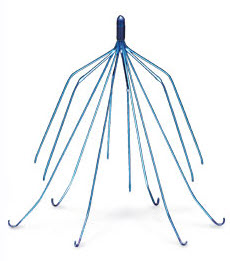What are IVC filters and when are they used?
Intra Vena Cava (“IVC”) filters are small spider-like devices that are implanted in the veins of patients in the hope that the filters will stop blood clots from reaching the patient’s lungs and other vital organs. IVC filters are designed to capture blood clots that occasionally break free from the deep veins inside a patient’s body before the blood clots can reach the patient’s lungs and cause a decrease or a complete stoppage of blood flow to the patient’s lungs. However, hundreds of reports from across the nation indicate that the devices may fracture or break after implantation resulting in serious injuries and in some cases death.
IVC filters are usually implanted in patients who are at risk for having a sudden blockage of a major blood vessel, known as a pulmonary embolism, and are either unable to take anticoagulants or the patient has taken anticoagulants but they have failed to properly prevent the patient’s blood from clotting. The IVC filters are supposed to be a safe alternative which prevents blood clots from forming in a patient’s blood vessels. However, in April of 2015, the Journal of the American Medical Association published a study comparing the treatment of patients presenting with an acute pulmonary embolism and a high risk of recurrence using a retrievable IVC filter plus anticoagulants versus using anticoagulants alone. The study revealed that “the use of a retrievable inferior vena cava filters plus anticoagulation compared with anticoagulation alone did not reduce the risk of symptomatic recurrent pulmonary embolism at 3 months.” Furthermore, the study suggested that patients with IVC filters may be twice as likely to suffer from a serious, and sometimes fatal, pulmonary embolism than patients who were prescribed anticoagulants alone. Therefore, the study suggests that IVC filters should not be used in cases where patients can be treated with anticoagulation.
 Alabama Injury Law Blog
Alabama Injury Law Blog














